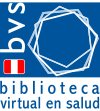Estudio de toxicidad a 28 días del extracto atomizado de rizoma de Curcuma longa (A4R), lores de Cordia lutea (A4F) y hojas de Annona muricata (A4L) en un modelo murino
##article.subject##:
Toxicidad aguda, Curcuma longa, Cordia, Annona##article.abstract##
La asociación de las tres plantas ha sido aprobada por la Institución de Salud en Canadá, bajo la forma de extracto lioilizado, la cual ha demostrado poseer efectos terapéuticos. Objetivos:determinar la seguridad de la asociación del extracto atomizado del rizoma de Curcumalonga(A4R); lores de Cordialutea (A4F) y hojas de Annonamuricata (A4L) a una dosis repetida durante 28 días por vía oral en ratas. Materiales y métodos: diseño experimental, se utilizaron 40 ratas Holtzman (20 machos – 20 hembras); se siguió las directrices o normas de la Organization for Economic Cooperation and Development (OECD) Norma 407; se administró el extracto atomizado durante 28 días por vía oral, se realizaron las observaciones, registro de signos y evolución semanal del peso corporal de los animales; al inal, se extrajo muestra de sangre para estudio hematológico y bioquímico; posteriormente, fueron sacriicados para estudio anatomopatológico de hígado, riñón, corazón, médula, cerebro, páncreas, y bazo; se aplicó el ANOVA, considerando el valor p<0,05 para la signiicancia. Resultados: al administrar la asociación en forma de extracto atomizado, se observó una evolución temporal homogénea del peso corporal. No hubo variación signiicativa en los niveles de glucemia, urea, colesterol, triglicéridos, bilirrubina indirecta, transaminasas (GPT–GOT), fosfatasa alcalina ni hemoglobina (p>0,05); Conclusiones: los hallazgos demuestran que el extracto atomizado del rizoma de Curcumalonga (A4R), las lores de Cordialutea (A4F) y las hojas de Annonamuricata (A4L) no es toxico en ratas, al ser administrado por un periodo de 28 días.
Descargas
Citas
Coria A, Moltalvo E, Yahia E, Obledo E. Annona muricata: A comprehensive review on its traditional medicinal uses, phytochemicals, pharmacological activities, mechanisms of action and toxicity. Arabian Journal of Chemistry. 2016. In Press. doi: http://dx.doi.org/10.1016/j.arabjc.2016.01.004
Jamkhande P, Wattamwar A. Annona reticulata Linn. (Bullock’s heart): Plant proile, phytochemistry and pharmacological properties. Journal of Traditional and Complementary Medicine. 2015; 5:144-152. doi: http://dx.doi.org/10.1016/j.jtcme.2015.04.001
Jong-Min H., Jin-Seok L., Hyeong-Geug K., In-Chan S., Hwi-Jin I., Jung-Hyo C. et al. Synergistic effects of Artemisia iwayomogi and Curcuma longa radix on high-fat diet-induced hyperlipidemia in a mouse model. Journal of Ethnopharmacology 2015; 173:217–224. http://dx.doi.org/10.1016/j.jep.2015.07.021
Efferth T. Perspectives for Globalized Natural Medicines. Chinese Journal of Natural Medicines. 2011; 9(1):1−6. doi: http://dx.doi.org/10.1016/S1875-5364(11)60010-1
Ernst E. Pharmaceutical Toxicology. Principles of Translational Science in Medicine (Second Edition). 2015. doi:10.1016/B978-0-12-800687-0.00028-1
Barroso R, Santana L, Gagliato D, Mano M. Biological therapies in breast cancer: Common toxicities andmanagement strategies. The breast. 2013; 22(6):1009-1018. doi: http://dx.doi.org/10.1016/j.breast.2013.09.009
Wang, H, Su G, Chen G, Bai J, Pei Y. H NMR-based metabonomics of the protective effect of Curcuma longa and curcumin on cinnabar-induced hepatotoxicity and nephrotoxicity in rats. Journal of Functional Foods. 2015; 17:459-467. doi: http://dx.doi.org/10.1016/j.jff.2015.04.014
Cunha C, Marcelino P, Dos Santos E, De Ávila R, Simone C, Martins F, et al. Use of Bidens pilosa L. (Asteraceae) and Curcuma longa L. (Zingiberaceae) to treat intestinal mucositis in mice: toxico-pharmacological evaluations, Toxicology Reports 2016 doi: http://dx.doi.org/10.1016/j.toxrep.2015.10.013.
Freire, R, Vistel M Phytochemical characterization of Curcuma longa L. Rev. Cubana Quím. 2015;27(1):9-18.
Gupta A, Mahajan S, Sharma R. Evaluation of antimicrobial activity of Curcuma longa rhizome extract against Staphylococcus aureus. Biotechnology reports. 2015; 6:51-55. doi: http://dx.doi.org/10.1016/j.btre.2015.02.001
Han Jong-Min,Lee Jin-Seok, Kin Hyeong-Geug, Seol In-Chan, Im Hwi-Jin, Cho Jung-Hyoo, et al. Synergistic effects of Artemisia iwayomogi and Curcuma longa radix on high-fat diet-induced hyperlipidemia in a mouse model. Journal of Ethnopharmacology. 2015; 173:217-224. doi: http://dx.doi.org/10.1016/j.jep.2015.07.021
Monserrath A, Serruis A, Afrikanova T, Maes J, Borggraeve W, Alen J, et al. Anticonvulsant activity of bisabolene sesquiterpenoids of Curcuma longa in zebraish and mouse seizure models. Epilepsy & Behavior. 2012; 24(1):14-22. doi: http://dx.doi.org/10.1016/j.yebeh.2012.02.020
Hernández T, Canales M, Terán B, Ávila O, Duran A, García A et al. Antimicrobial activity of the essential oil and extracts of Cordia curassavica (Boraginaceae). Journal of Ethnopharmacology. 2007; 111(1):137-141. http://dx.doi.org/10.1016/j.jep.2006.11.002
Parisotto E, Michielin E, Biscaro F, Ferreira S, Wilhelm D, Pedrosa R. The antitumor activity of extracts from Cordia verbenacea D.C. obtained by supercritical luid extraction. The Journal of Supercritical Fluids. 2012; 61:101-107. doi: http://dx.doi.org/10.1016/j.suplu.2011.08.016
Passos G, Fernandes E, Da Cunha F, Ferreira J, Pianowsky L, Campos M, et al. Anti-inlammatory and anti-allergic properties of the essential oil and active compounds from Cordia verbenácea. Journal of Ethnopharmacology. 2007; 110:323–333. doi: http://dx.doi.org/10.1016/j.jep.2006.09.032
Arroyo J, Martine J, Ronceros G, Palomino R, Villareal A, Bonilla P, et al. Efecto hipoglicemiante coadyuvante del extracto etanólico de hojas de Annona muricata L (guanábana), en pacientes con diabetes tipo 2 bajo tratamiento de glibenclamida. An Fac med. 2009; 70(3):163-7. doi: http://dx.doi.org/10.15381/anales.v70i3.934
Sun S, Liu J, Zhou N, Zhu W,Dou P, Zhou K. Isolation of Three New Annonacous Acetogenins from Graviola Fruit (Annona muricata) and their Anti-Proliferation on Human Prostate Cancer Cell PC-3. Bioorganic & Medicinal Chemistry Letters. 2015. IN PRESS. doi: http://dx.doi.org/10.1016/j.colsurfb.2013.08.032
Zorofchian S, Karimian H, Rouhollani E, Paydar M, Fadaeinsab M, Kadir H, et al. Annona muricata leaves induce G1 cell cycle arrest and apoptosis through mitochondria-mediated pathway in human HCT-116 and HT-29 colon cancer cells. Journal of Ethnopharmacology. 2014;156:277-289. doi: http://dx.doi.org/10.1016/j.jep.2014.08.011
Minari J, Okeke U. Chemopreventive effect of Annona muricata on DMBA-induced cell proliferation in the breast tissues of female albino mice. Egyptian Journal of Medical Human Genetics. 2014;15(4):327-334. doi: http://dx.doi.org/10.1016/j.ejmhg.2014.05.001
Florence NT, Benoit MZ, Jonas K, Alexandra T, Désiré DD, Pierre K, Théophile D. Antidiabetic and antioxidant effects of Annona muricata (Annonaceae), aqueous extract on streptozotocin-induced diabetic rats. J Ethnopharmacol. 2014; 151(2):784-790. doi: http://dx.doi.org/10.1016/j.jep.2013.09.021
Cabanillas J. Composition for treating hepatitis containing an extract of cordia lutea lowers, Annona muricata leaves, and Curcuma longa roots. [Internet]. . [Internet]. Canada: SABELL CORP; CA2701190 (A1), 2008. Available from: http://europepmc.org/patents/PAT/CA2701190.
Kandhare A, Bodhankar S, moha V, Tukardesai P. Acute and repeated doses (28 days) oral toxicity study of glycosides based standardized fenugreek seed extract in laboratory mice. Regulatory Toxicology and Pharmacology. 2015; 72(2):323-334. doi: http://dx.doi.org/10.1016/j.yrtph.2015.05.003
Saiful L, Ong Y, Zaaba N, Mohd R, Biau J, Sim Y. Anti-breast cancer properties and toxicity of Dillenia suffruticosa root aqueous extract in BALB/c mice. Asian Paciic Journal of Tropical Biomedicine.2015; 5(12):1018-1026. doi: http://dx.doi.org/10.1016/j.apjtb.2015.09.008
Ting Y, Chiou Y, Jiang Y, Lin Z, Huanga Q. Safety evaluation of tangeretin and the effect of using emulsion-based delivery system: Oral acute and 28-day sub-acute toxicity study using mice. Food Research International. 2015; 74:140-150. doi: http://dx.doi.org/10.1016/j.foodres.2015.04.031
Da Silva A, Reginato F, Guex C, Figueredo K, Araldi I, De Freitas R, et al. Acute and sub-chronic (28 days) oral toxicity evaluation of tincture Baccharis trimera (Less) Backer in male and female rodent animals. Regulatory Toxicology and Pharmacology. 2016;74:170-177. doi: http://dx.doi.org/10.1016/j.yrtph.2015.10.024
Karenina G, Coelho J, Barros A, Alexandre M, Onofre W,Marquez R, et al. Acute and subacute (28 days) oral toxicity assessment of the oil extracted from Acrocomia aculeata pulp in rats. Food and Chemical Toxicology. 2014; 74:320-325. doi: http://dx.doi.org/10.1016/j.fct.2014.10.026
Prabu P, Panchapak S, David C. Acute and Sub-Acute Oral Toxicity Assessment of the Hydroalcoholic Extract of Withania somnífera Roots in Wistar Rats Phytother. Res. 2012. doi: http://dx.doi.org/10.1002/ptr.4854
Novic E, Parekh A, Cho C, Pludwinski E, Freedman R. Hepatotoxicity of drug compounds in four species (human, dog, cynomulgus primate, and rat) in long-enduring, stable HμREL® hepatocyte co-culture models.Toxicology Letters. 2014;229:S139. doi: http://dx.doi.org/10.1016/j.toxlet.2014.06.489
Descargas
##submissions.published##
##issue.issue##
##section.section##
Licencia
Derechos de autor 2016 Jorge Arroyo-Acevedo, César Franco-Quino, Roberto Chavez-Asmat, Andrea Anampa-Guzmán, Juan Rojas-Armas, José Cabanillas-Coral

Esta obra está bajo una licencia internacional Creative Commons Atribución 4.0.
La revista utiliza una licencia Creative Commons para mostrar a los lectores y usuarios cómo se pueden utilizar los contenidos publicados.
Los contenidos publicados en esta revista están bajo una licencia CC-BY 4.0. Esta licencia permite:
- Compartir — copiar y redistribuir el material en cualquier medio o formato
- Adaptar — remezclar, transformar y construir a partir del material para cualquier propósito, incluso comercialmente.
Bajo los siguientes términos:
-
Atribución — Usted debe dar crédito de manera adecuada, brindar un enlace a la licencia, e indicar si se han realizado cambios. Puede hacerlo en cualquier forma razonable, pero no de forma tal que sugiera que usted o su uso tienen el apoyo de la licenciante.






